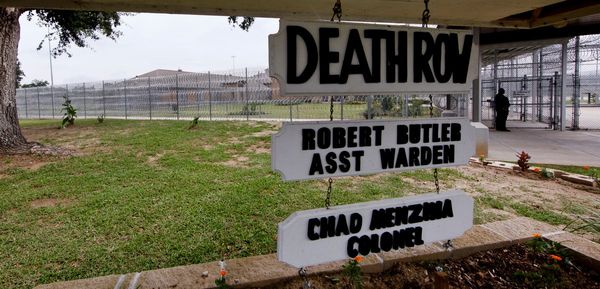
At first glance, Hany Armanious’s work is just rubbish – literally. Bits of Blu-Tack, old paint trays, half-burnt candles, a rusty table covered in sand.
But the objects on display at the Henry Moore Institute in Leeds are actually casts. They are not the original bits of Blu-Tack, they are utterly flawless replicas of them made in resin. I asked Armanious to tell me how he does it over and over, and I still struggled to comprehend how he could make perfect replicas of sand, foam, rope, stone and glass. They look so real, and they open an infinite can of worms about what makes something real, and why it matters. As the institute’s head, Laurence Sillars, points out, Armanious is asking us to trust that these really are copies, and to suspend our disbelief.
Armanious was born in Egypt but has lived and worked in Australia since childhood, and this is his first institutional show in the UK. He takes his work very seriously, but he also embraces the playful and, as he puts it, uncontrollable nature of it. He calls the works “events”, “happenings”, “safaris” – they come to be without his conscious intent, through experimentation and what he describes as “the surrender of control”. “Calm right down,” he says, with a deep breath – only then do the works have the space to come into being.
“It’s about redemption,” he tells me. By casting and copying these most mundane of objects, they are celebrated and redeemed. But Armanious doesn’t want us to think these things are more important than the originals: on the contrary, the casts elevate the originals, too, making us think about the stuff we’re surrounded by in new ways.
There is a sense of humour present that might also be a sense of existentialism about the way these works are installed in the space – many are placed directly on the floor, disrupting the ways we are used to viewing sculpture. As I walked around the space, I accidentally stepped on a leaf-that-isn’t-really-a-leaf, spilling out of a polystyrene box on the floor (which of course, isn’t really a polystyrene box). There is a cast of a tiny ball of rope and crayons stuck in the corner on the floor, easily missed, and one of the most technically impressive works stands unassumingly in a corner: a cast of a projector screen, that is unnervingly accurate.
I want to know what it all means, this practice of making perfect copies of mundane things. But Armanious resists this kind of boxing in. He isn’t interested in narrative, or explaining a philosophy around reproduction. That isn’t what the work is about. The strange magnetism of it is precisely in its rejection of that kind of rationalisation. Efforts to bring a narrative to the work, such as by connecting it to his immigrant background or by making connections to western art history, don’t really interest him. “It’s so much fun trying to articulate something that is a waste,” he says. There is such a joy and a calmness about the way he approaches his work. It’s impossible to turn that process, and the work itself, into words.
This exhibition marks the reopening of the newly refurbished Henry Moore Institute. It’s the first time the space has been updated since it opened 31 years ago. It now has more public engagement spaces, including a more welcoming foyer and an engagement studio for programming for young people. It also boasts a solar panel roof, which will immediately have an impact on energy consumption – if the sun ever comes out in Yorkshire this summer. “Our mission has always been to have a programme characterised by artists who have made a significant contribution to sculptural thinking but are not yet sufficiently known in Europe,” Sillars tells me, and that remains unchanged. “We’re always thinking about narratives that have been marginalised.”
Armanious’s exhibition is called Stone Soup, a reference to the old folk tale about making soup from nothing – but really from everything. It’s an apt title for an exhibition that questions what makes something something, and it is a wonderful opening for the rejuvenated institute. The highly skilled casting Armanious practices and the idiosyncratic, completely original take on what art can be and mean, are energising. His work pushes at the idea of surface itself. What lies beneath an exterior we think we can read so easily? What is the difference between real and not real, and why does it matter? How can the physicality, the tactility of sculpture remind us of the quiet beauty and playful humour of the things we barely look twice at? Armanious’s work doesn’t answer these questions, but it asks them in a way that allows us to accept that the answers might come in feelings, intuition and embodiment rather than words. No wonder it’s so hard to describe how astonishing it is.
Hany Armanious: Stone Soup is at the Henry Moore Institute, Leeds, until 3 November







